39 reading fat on nutrition labels
How to Read Nutrition Labels - frederickhealth.org These are the essentials: Serving Information (top of the label): The number of servings in the package or container and the serving size. The serving size is the amount that people typically eat or drink— not how much you should eat or drink. Calories (second on the label): A measure of how much energy you get from a serving of the food. How to Read Food Labels for Fats and Oils A Note on Ingredient Lists Fats and oils can come from many sources, like animal fats, fish, seeds, plants, and nuts. Reading the ingredient lists on products will reveal the source of the fat. For oils and fats ingredient lists, fats and oils are referred to by their common names (e.g., "beef fat," "cottonseed oil").
Misleading Nutrition and Food Labels - Health Jun 07, 2012 · Terms like "fat free" or "all natural" are often slapped on a food item that may not be healthy at all. Check out our list of the 16 most common and most misleading phrases manufacturers use on food.
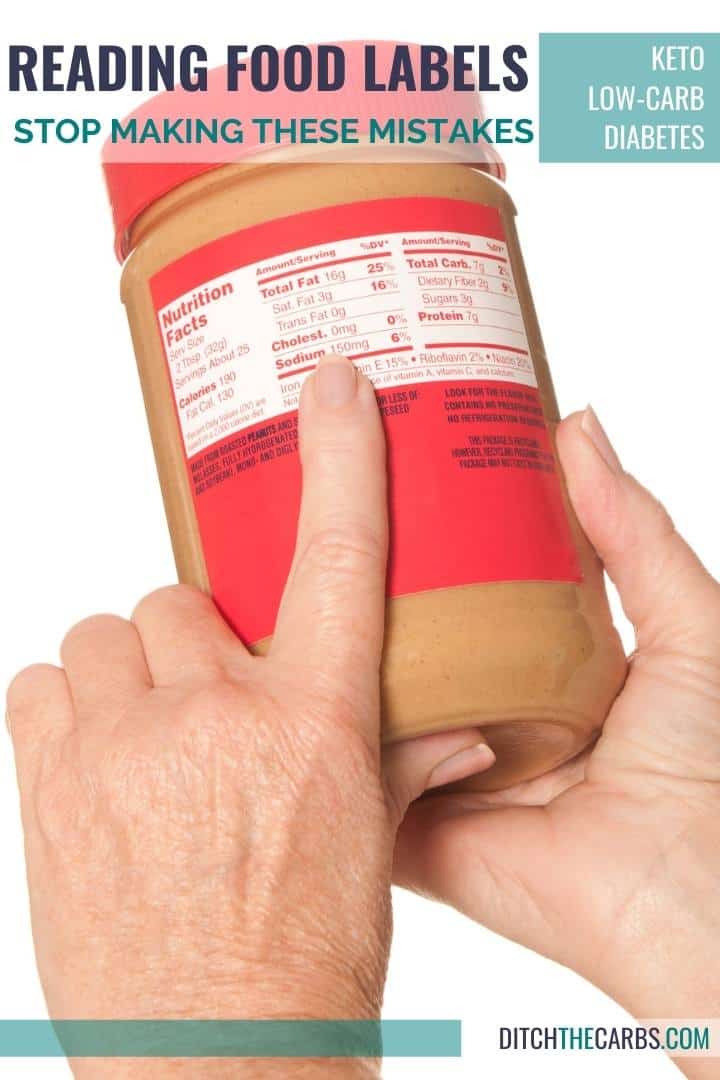
Reading fat on nutrition labels
Changes to the Nutrition Facts Label | FDA - U.S. Food and ... Mar 07, 2022 · Spanish (Español) The Nutrition Facts label on packaged foods was updated in 2016 to reflect updated scientific information, including information about the link between diet and chronic diseases ... Interpreting Total Fat and Types of Fat on Food Labels - Nina Cherie ... Now, at the end of the day, since all high-fat foods tend to drive up calorie counts, it's typically recommended that you limit your intake of total fat to 25-35% of your daily calories. Of this amount, saturated fats and trans fats should comprise less than 7-10% and no more than 1%, respectively. How to Read a Nutrition Label? (Things to Consider Explained) Percent Daily Value: This lists the nutrients with the percentages that you can consume on a particular day. Consuming excessive quantities of even these helpful nutrients could be dangerous. Generally, the value of 5% is considered low; if it exceeds 20%, it is considered high. So, you can have an idea regarding what you should consume for a ...
Reading fat on nutrition labels. Reading and Understanding Food Labels and Nutrition Info | Beaumont Health A one-percent reduction of saturated fat in your diet reduces your heart disease risk by three percent. Keep saturated fat to less then 15 grams per day. It is not required to list unsaturated fats (polyunsaturated and monounsaturated) on food labels. In general, unsaturated fats lower cholesterol. The healthiest unsaturated fat is canola oil. How To Read Food and Beverage Labels - National Institute on Aging Most older adults exceed the recommended limits for saturated fats, sodium, and added sugars. Compare and choose foods to get less than 100% DV of these each day, making sure to adjust for how many calories are in your diet. Additionally, many older adults do not get the recommended amounts of dietary fiber, vitamin D, calcium, and potassium. Easy Guide to Understanding Food Labels When You Have High ... - MyDoc 1. Choose products low in saturated fat, trans fat and cholesterol. When shopping for food, use the nutrition information panel to compare and choose products with lower fat, saturated fat and cholesterol content. Saturated fat is a type of fat that raises your total and LDL cholesterol and risk of heart disease, so intake should be limited. Learn How the Nutrition Facts Label Can Help You Improve Your Health Read the Nutrition Facts labels on your packaged food and drinks to keep track of sugars, fats, protein, and other nutrients. Most sodium we consume is from salt, and salt is commonly in processed foods. Read labels and choose the product with less sodium. Drink plain water instead of sugary beverages.
Nutrition Advocates Urge Front-of-Package Labels Highlighting ... Sep 06, 2022 · The advocates want a more condensed label on the front of packaged-food items that would flag certain health risks, such as high sugar or saturated-fat content. Industry groups say existing labels ... This Is How to Read a Nutrition Facts Label on the Keto Diet That's not a 33% fat, 33% carb, 33% protein ratio. It's actually 52% fat, 24% carb, 24% protein. This may sound a little confusing, but as long as you limit carbs (the most important part) and aim for healthy fats and protein to make up a majority of your daily macronutrient intake, your results should be excellent. Quick Tips for Reading the Nutrition Facts Label - Food and Drug ... To create your Tip Card: 1. Use a pair of scissors to cut along the dotted lines. 2. Fold along the center line. 3. Keep the Tip Card in your wallet or purse. Calories230 Amount per serving Serving... Trans Fats | American Heart Association Mar 23, 2017 · Use soft margarine as a substitute for butter, and choose soft margarines (liquid or tub varieties) over harder stick forms. Look for “0 g trans fat” on the Nutrition Facts label and no hydrogenated oils in the ingredients list. Doughnuts, cookies, crackers, muffins, pies and cakes are examples of foods that may contain trans fat.
PDF A Guide to Reading Food Labels - University of Rochester Another important part of the label is the number of calories from fat. You should limit the number of calories from fat to 20-35% of your total daily calories. In the sample label, there are 250 calories in one serving and 110 calories from fat. This means almost 50% of the calories in a single serving of this food come from fat. Reading Food Labels | Children's Hospital of Philadelphia Clinical Nutrition. 10 Locations. Contact Us. 215-590-5223. 267-425-3310. Clinical Nutrition Home. News and Articles. Patient Instructions. How to Read Nutrition Labels: Fat Content, Carbs & What To Look For Nutrition labels are required to include total fat, saturated fat, and trans fat. The total amount of fat in the diet is a percentage of your calorie needs. The recommendation for the typical American diet is around 30%. For someone taking in 2,000 calories, this would mean around 70 grams of total fat per day. Food labels - NHS Nutrition labels are often displayed as a panel or grid on the back or side of packaging. This type of label includes information on energy (kJ/kcal), fat, saturates (saturated fat), carbohydrate, sugars, protein and salt. It may also provide additional information on certain nutrients, such as fibre.
Label Reading the Healthy Way - Alberta Health Services like fat, salt, or fibre. Always check the Nutrition Facts table when there is a claim on a package. For example something that is “low in saturated fat”, does not mean it is low in total fat. For more information Visit . HealthyEatingStartsHere.ca. and search Label Reading. To learn more about reading food labels go to
Reading Food Labels | ADA - American Diabetes Association Reading Food Labels | ADA Understanding Food Labels It's time to decode those food claims. Trying to figure out nutritional information on labels and packaging isn't easy. The good news is that we can help. Untangle packaging claims. If you get tripped up on food content claims, you're not alone. Fat free vs. low fat vs. reduced fat.
Reading Food Labels - NZ Nutrition Foundation This has information on how much of the following nutrients are present: Energy (kilojoules) Protein (grams) Total fat (grams) Saturated fat (grams) Total carbohydrate (grams) Sugar (grams) Sodium (milligrams) It is up to the food manufacturer if they want to display additional nutrients such as fibre, iron, calcium etc.
How to Understand and Use the Nutrition Facts Label | FDA Nutrients to get less of: Saturated Fat, Sodium, and Added Sugars. Saturated fat, sodium, and added sugars are nutrients listed on the label that may be associated with adverse health effects - and...
Understanding Food Nutrition Labels | American Heart Association Mar 06, 2017 · When the Nutrition Facts label says a food contains “0 g” of trans fat, but includes “partially hydrogenated oil” in the ingredient list, it means the food contains some trans fat, but less than 0.5 grams per serving. So, if you eat more than one serving, you could end up eating too much trans fat.
PDF TO CARE 4 YOURSELF READING A NUTRITION FACTS LABEL - novoMEDLINK You can read the Nutrition Facts labels to compare calorie counts of similar foods to find the lowest-calorie option. Total fat This line tells you how much fat is in a serving of this food. It includes fats that are good for you, such as mono- and polyunsaturated fats.
Food Labels | CDC - Centers for Disease Control and Prevention Check the Serving size first. All the numbers on this label are for a 2/3-cup serving. This package has 8 servings. If you eat the whole thing, you are eating 8 times the amount of calories, carbs, fat, etc., shown on the label. Total Carbohydrate shows you types of carbs in the food, including sugar and fiber.
Fat Content on Food Labels - Reading Between the Lines The Mayo Foundation continued, "Still, you may be able to tell if a product contains trans fat, even if it's not directly listed on the food label. Look for the words ' hydrogenated ' or 'partially hydrogenated' in the list of ingredients. These terms indicate that the product contains trans fat.
How to Read Nutrition Labels | Eat Smarter USA Some specific things I like to look out for on my nutrition label are saturated fat, trans fat, sodium, and added sugars. While healthy natural fats are needed in our daily diet, saturated and trans fats are single-bonded fats which are not good for the body, and can result in issues such as blocked arteries and high cholesterol.
How To Read Nutrition Labels - Mayo Clinic Diet 3. Check the % Daily Value The % Daily Value (DV) tells you how much a nutrient in a serving of food contributes to a daily diet. 2,000 calories a day is used for general nutrition advice. Low is 5% or less. Aim for low in saturated fat, trans fat, cholesterol, sodium, and added sugars. High is 20% or more.
How to Read Everything on the Nutrition Facts Label - Food Network Bottom line: When looking at the fat breakdown of the food, aim for those with no trans fat, a minimal amount of saturated fat, and more mono- and poly-unsaturated fats to promote heart health. Sodium
How to Use the Nutrition Fact Label, Eat Right, NHLBI, NIH When using the Nutrition Facts label as a guide, try these tips: Keep these low: saturated fats, trans fats, cholesterol, and sodium. Get enough of these: potassium, fiber, vitamins A and C, calcium, and iron. Use the Percent Daily Value (% DV) column when possible; 5% DV or less is low, 20% DV or more is high. Visit the Smart Food Shopping ...
The Basics of the Nutrition Facts Label - Academy of Nutrition and ... Step 4: Check Out the Nutrition Terms. Low calorie: 40 calories or less per serving. Low cholesterol: 20 milligrams or less and 2 grams or less of saturated fat per serving. Reduced: At least 25% less of the specified nutrient or calories than the usual product. Good source of: Provides at least 10 to 19% of the Daily Value of a particular ...
How To Read a Nutrition Label for Bariatric Surgery & Weight Loss The sneaky thing is that if a label has less than 0.5 g of trans fats it can be labeled as zero! When reading your ingredients avoid foods that contain hydrogenated oil or partially hydrogenated oil. Saturated fat should also be limited as this can also increase your risk for heart disease and elevated cholesterol.
Food Labels: Fat & Cholesterol | Home & Garden Information Center The Nutrition Facts label shows you how much fat is in a product, even if the fat is hidden as an ingredient. The serving size and the nutrients listed on this label are consistent, which makes it easy to compare similar products without any calculations. % Daily Values (% DVs) are listed in a column on the "Nutrition Facts" label.
PDF Reading Nutrition Labels - Xavier University Experts agree we should limit saturated fats and avoid trans fats. More nutritious sources of fat include olive oil, avocado, fatty fish, and nuts. Fat also contributes to making food more satisfying. Protein helps with building and repairing tissue; it's found in every cell. The body also uses extra protein as an energy source.
How to Read a Nutrition Label? (Things to Consider Explained) Percent Daily Value: This lists the nutrients with the percentages that you can consume on a particular day. Consuming excessive quantities of even these helpful nutrients could be dangerous. Generally, the value of 5% is considered low; if it exceeds 20%, it is considered high. So, you can have an idea regarding what you should consume for a ...
Interpreting Total Fat and Types of Fat on Food Labels - Nina Cherie ... Now, at the end of the day, since all high-fat foods tend to drive up calorie counts, it's typically recommended that you limit your intake of total fat to 25-35% of your daily calories. Of this amount, saturated fats and trans fats should comprise less than 7-10% and no more than 1%, respectively.
Changes to the Nutrition Facts Label | FDA - U.S. Food and ... Mar 07, 2022 · Spanish (Español) The Nutrition Facts label on packaged foods was updated in 2016 to reflect updated scientific information, including information about the link between diet and chronic diseases ...


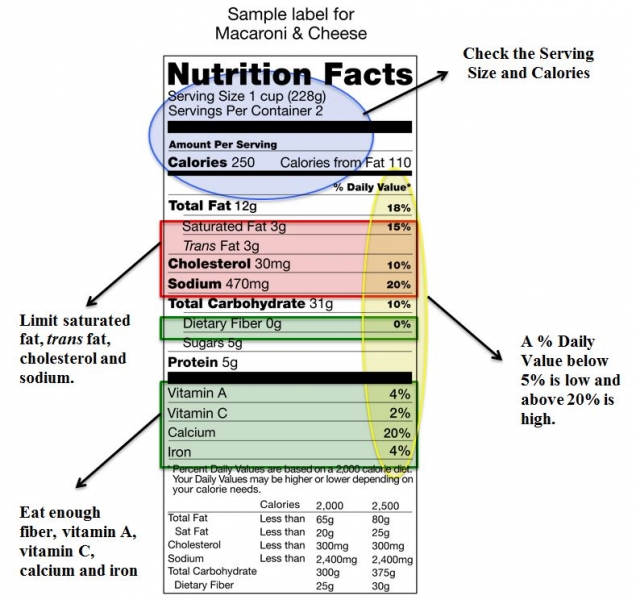

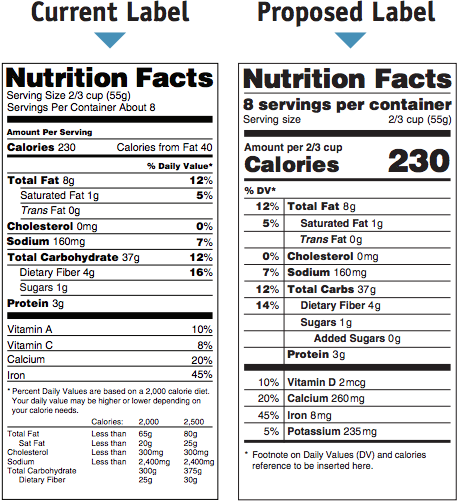




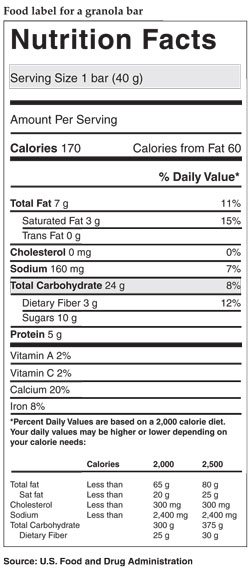






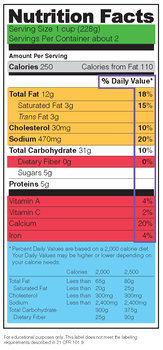

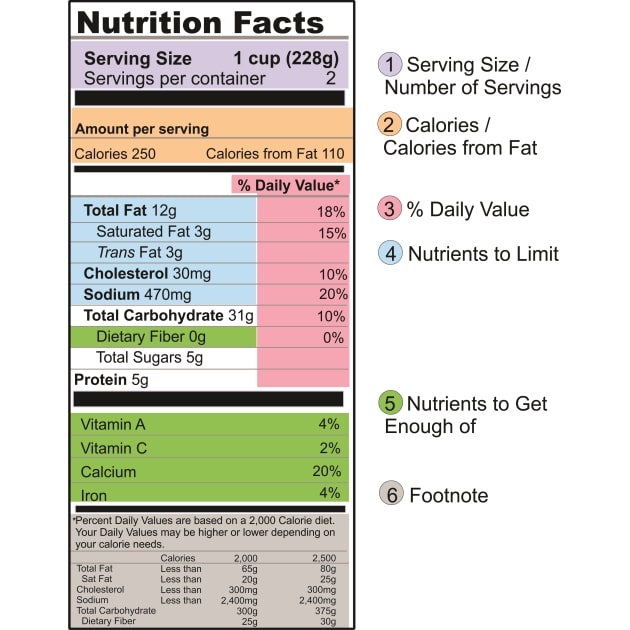

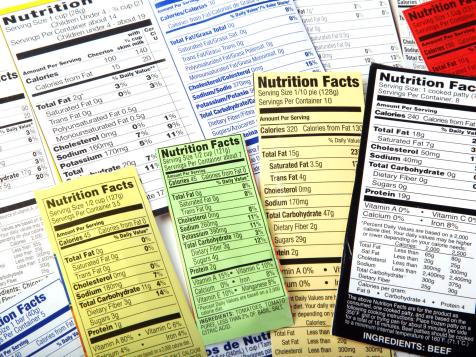

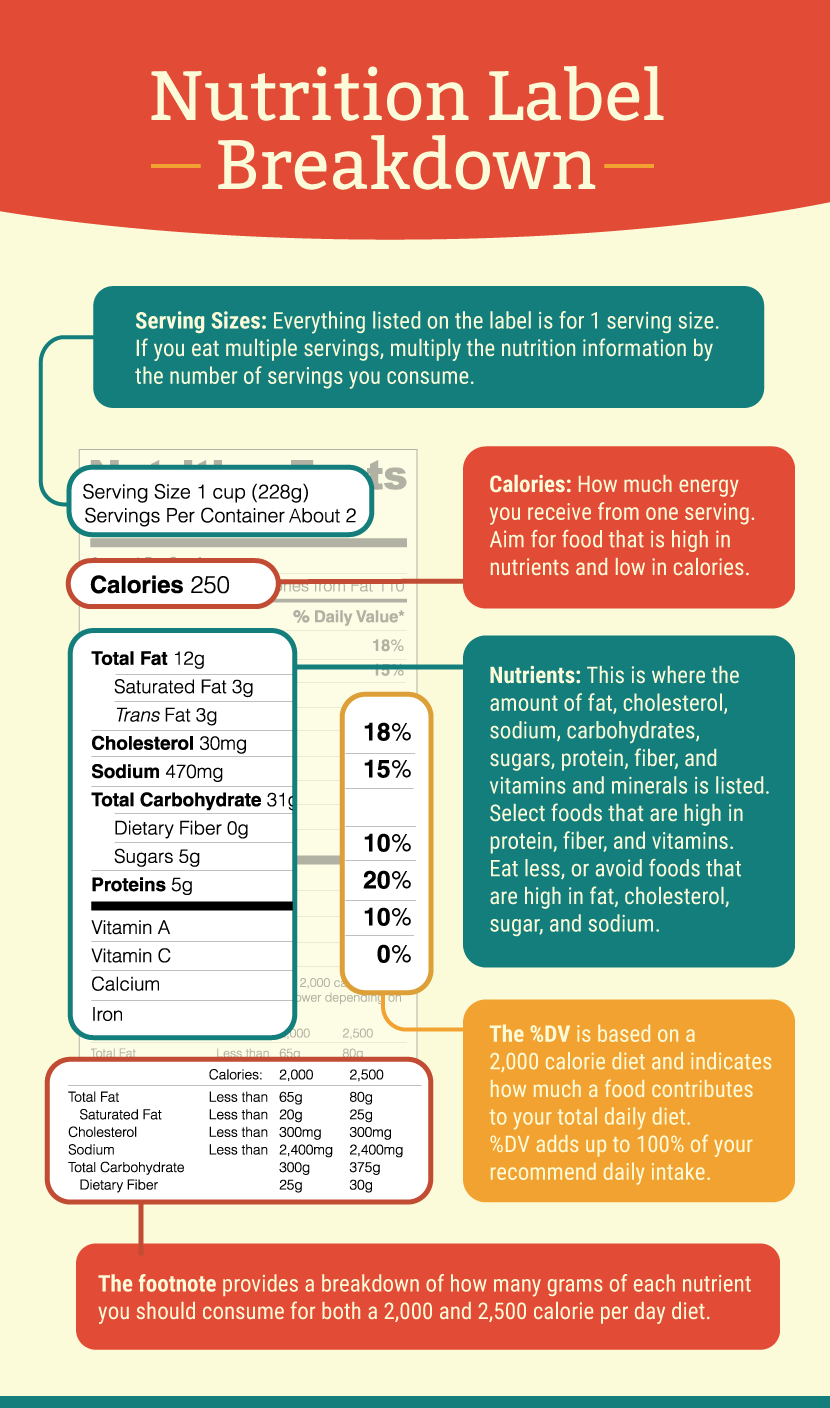
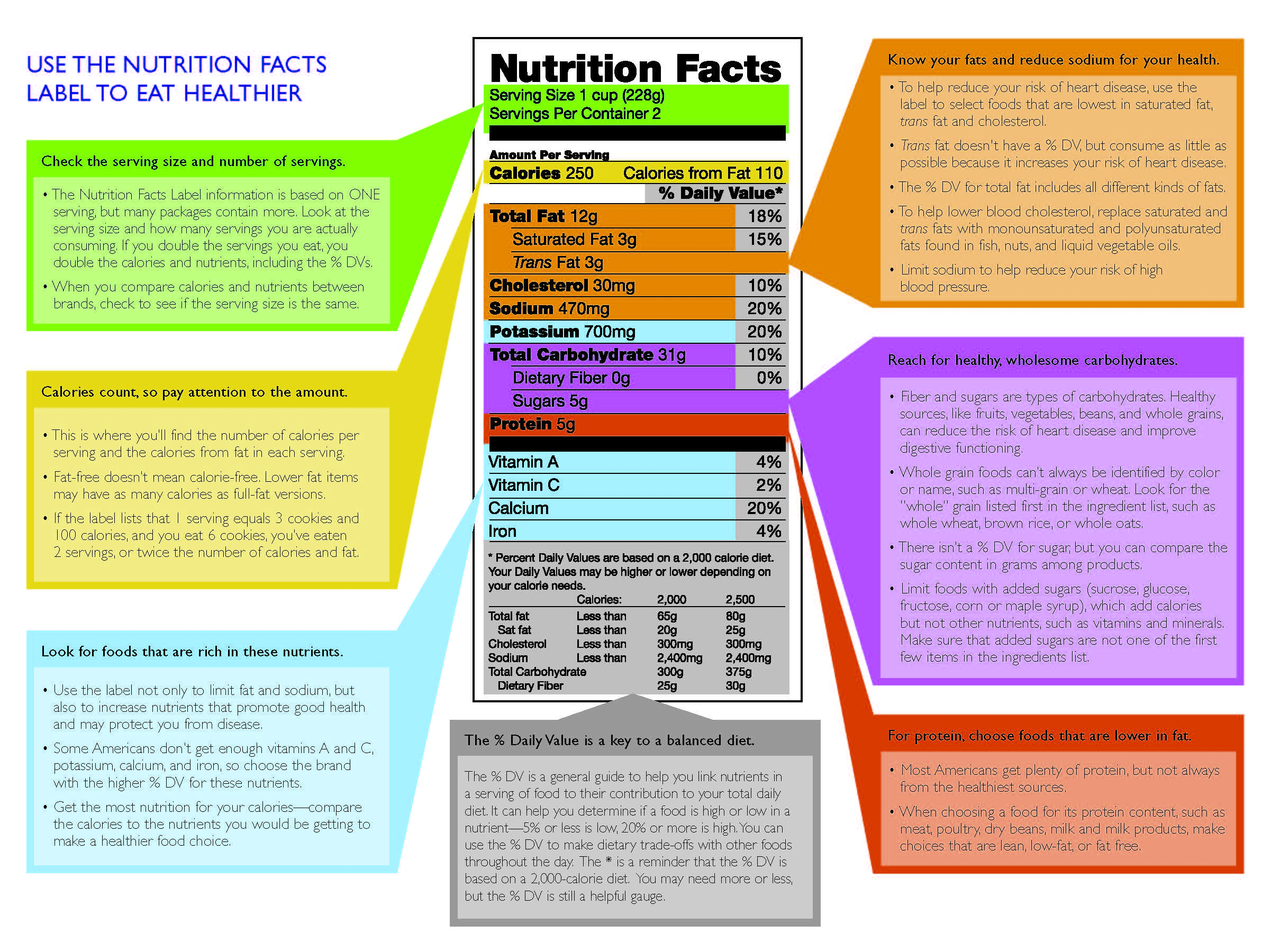








Post a Comment for "39 reading fat on nutrition labels"